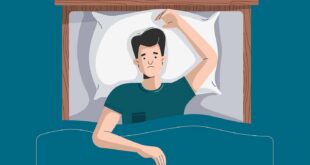Behavioural aspects of anxiety.
These symptoms are what we DO when we are anxious – i.e. our response to our thoughts, feelings and physical symptoms. The most common behavioural symptom of anxiety is avoidance.
How many times have you simply avoided putting yourself into a situation where you have previously felt anxious?
For those of you who haven’t avoided situations, DON’T! Avoidance only serves to reinforce the message of danger and whilst it may seem to feel the best thing to do at the time, it really is only a short-term solution.
Likewise, many an anxious person has escaped a situation where they start to feel anxiety. I have found through my own experience that when I ran away from anywhere, it was always twice as hard ever going back there.
Even though it is hard to stay somewhere when you feel absolutely terrible, do your best to resist the urge to flee. This doesn’t mean you have to sit through hell – you can always go for a walk, refresh yourself in the bathroom – but it does mean staying put until the anxiety subsides, and it will.
Think back over the past week, and identify any avoidance behaviour you may have carried out. Some
examples of avoidance behaviours are given below: Taking taxis instead of using public transport or
walking.
Making excuses in order to avoid going out with family and friends.
Sitting at the end of a row in theatres or cinemas.
Avoiding going out alone; always taking someone with you.
Rushing out of situations where you feel anxious.
Only shopping when it is quiet.
Using minor roads to avoid busier ones and heavy traffic.
Crossing the street to avoid people.
If you have already started to avoid certain places, doing specific things, don’t worry, you can still help yourself.
The best way to do this is to set yourself small targets, ones that you will easily achieve, to allow you to gradually face up to the situation causing you anxiety.
This method is called ‘systematic desensitisation’, or ‘behavioural desensitisation’ because it involves gradually exposing yourself to the situation that causes you distress.
It is possible to practice this on your own, although some people feel they need to seek guidance from a professional.
If you feel strong enough to embark on a programme of desensitisation alone, then it is a good idea to
write down a hierarchy of tasks that you would like to set for yourself to complete over a period of time.
The first task on the list should be something that you would find relatively easy to do and the last task
something that you would not contemplate at present but would very much like to do, if you didn’t
have anxiety. My list at the time looked something like this:
- Go to the post box four doors away.
- Go to the corner shop.
- Stand in the post office queue
when quiet. - Stand in the post office queue
when busy. - Go to the supermarket.
- Do all the above in sequence but alone.
- Do all the above in sequence but walk,
not take the car. - Go into local shopping mall.
- Go into Manchester city centre.
- Go beyond Manchester city centre
 Therapy for anxiety Therapy for anxiety
Therapy for anxiety Therapy for anxiety



